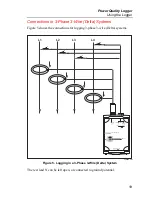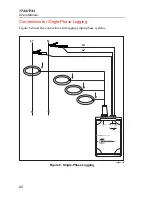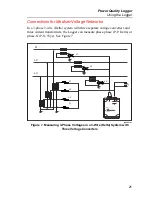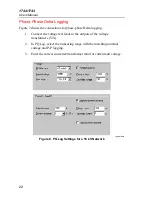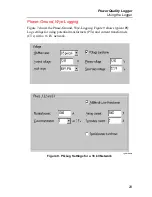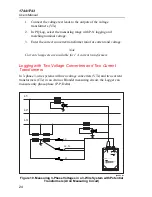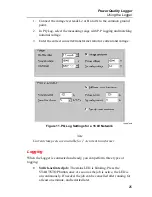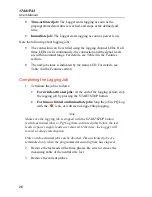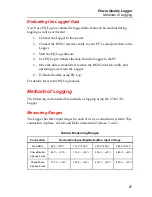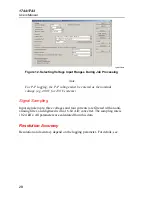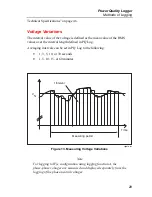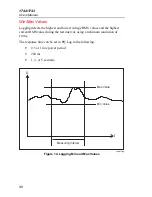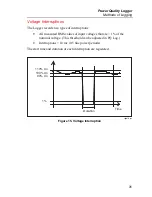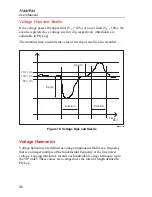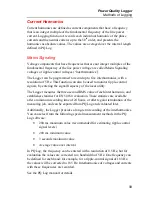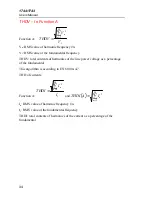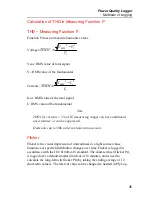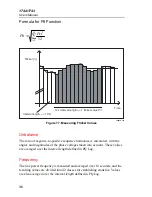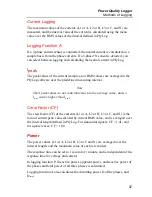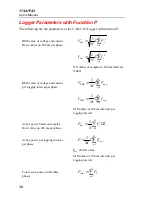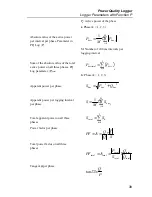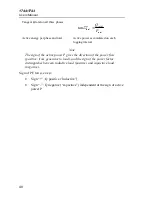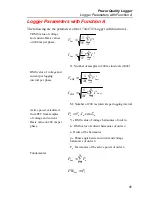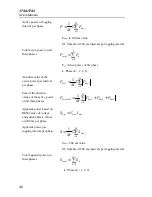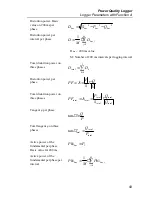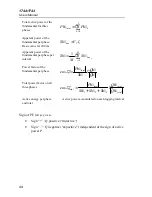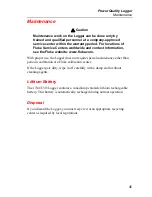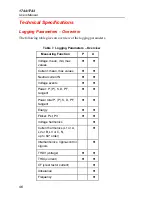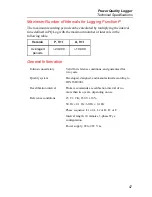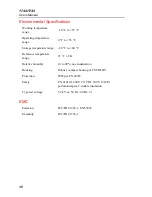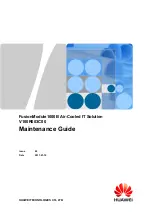
Power Quality Logger
Methods of Logging
33
Current Harmonics
Current harmonics are defined as current components that have a frequency
that is an integer multiple of the fundamental frequency of the line power
current. Logging function A records each individual harmonic of the phase
currents and the neutral current, up to the 50
th
order, and presents the
harmonics as absolute values. The values are averaged over the interval length
defined in PQ Log.
Mains Signaling
Voltage components that have frequencies that are not integer multiples of the
fundamental frequency of the line power voltage are called Mains Signaling
voltages or ripple-control voltages (“interharmonics”).
The Logger can be programmed to record up to five interharmonics, with a
resolution of 5 Hz. This function can also be used to monitor ripple-control
signals, by entering the signal frequency of the local utility.
The Logger measures the three-second RMS value of each interharmonic, and
establishes statistics for EN 50160 evaluation. These statistics are available
after a minimum recording time of 24 hours, or after regular termination of the
measuring job, and can be exported from PQ Log and evaluated later.
Additionally, the Logger provides a long-term recording of the interharmonics.
You can select from the following special measurement methods in the PQ
Log software:
•
200 ms maximum value (recommended for estimating ripple-control
signal levels)
•
200 ms minimum value
•
3 seconds maximum value
•
Average value over interval
In PQ Log, the frequency can be entered with a resolution of 0.5 Hz, but for
evaluation the values are corrected to a bandwidth of 5 Hz. One frequency can
be defined for each band: for example, for a ripple-control signal of 183 Hz,
the values will be corrected to 185 Hz. Interharmonics of voltages and currents
with these frequencies are recorded.
See the PQ Log manual for details.

